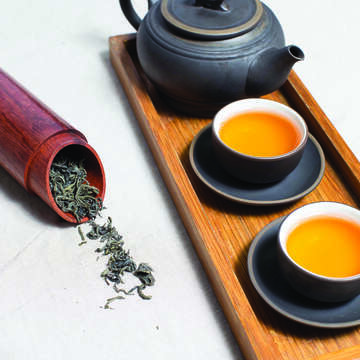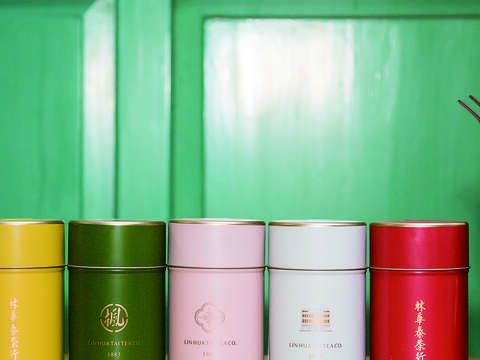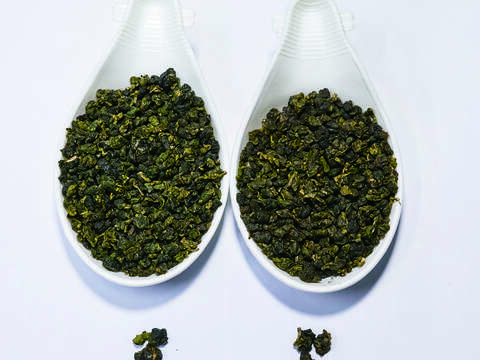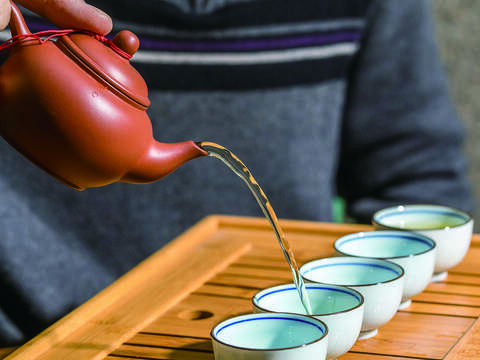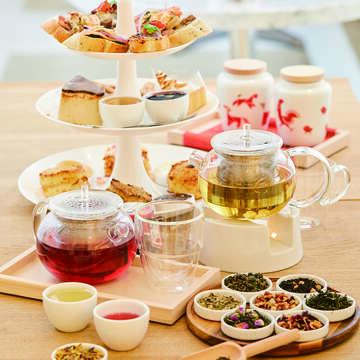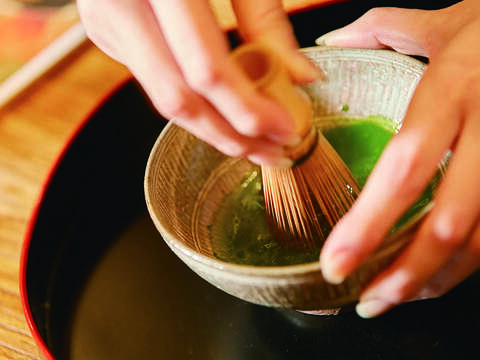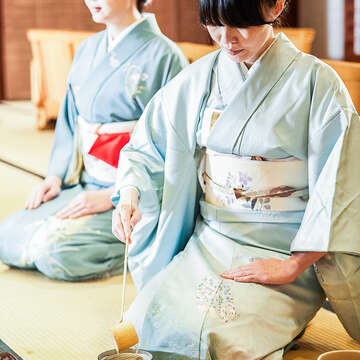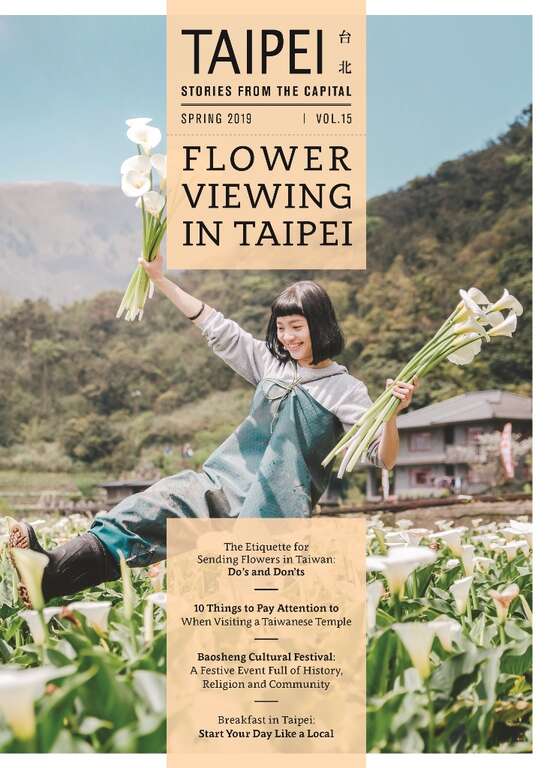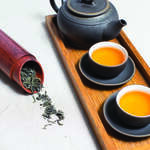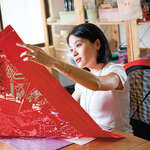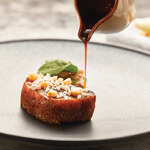Post date:2019-03-22
1634
TAIPEI #15 (2019 SPRING)
Savor the Tea and Enjoy the Pleasant Aroma in the City on a Springtime Day
WORDS BY Lin Shohan
TRANSLATION BY Joe Henley
PHOTOS BY Liu Deyuan, Liang Zhongxian, Alisher Sharip
In Taipei, you are never far from a century-old tea shop. Blessed with frequent international exchanges over the centuries, the city is the confluence of tea houses from different cultures. No matter where you roam, there is no way you can miss the elegant smell of tea among Taipei’s streets and alleys.
SIP FROM THE TEA CUP WITH EASE IN TAIWAN’S CENTURY-OLD TEA SHOPS
“ Tea brewing should be casual without putting stress on the price of the tea. If you like it, it’s good tea. ”
The Chinese have a long history of tea drinking, which dates back to the era of Shennong (神農氏), the Emperor of the Five Grains in China 4,500 years ago. With such a long expanse of time, changes happen, making tea the most common drink amongst the ethnic Chinese all around the world.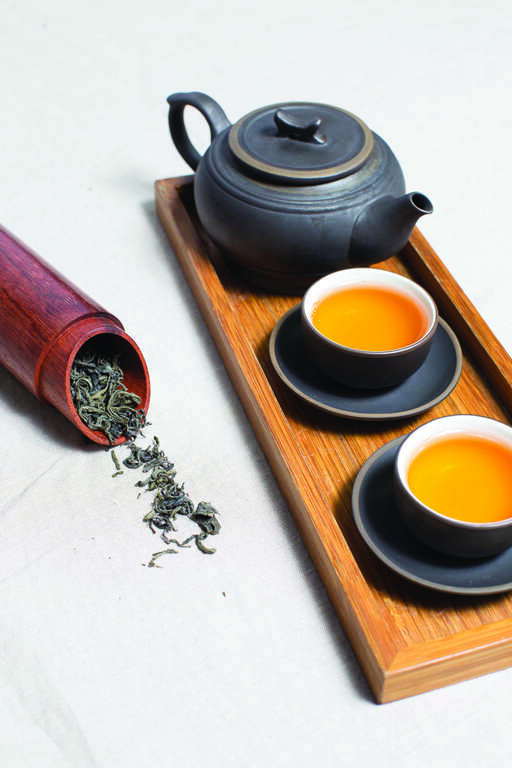
Tiny as it is when compared to other places occupied by the Chinese, Taiwan still holds true to the essence of tea planting and tea making. The topography, climate, latitude, and altitude of the island are quite conducive to growing tea trees. Liao Mingzong (廖明宗), factory manager of the century- old Lin Hua Tai Tea Company (林華泰茶行), takes pride in Taiwan’s tea making technology. “The three factors that secure the quality of Taiwanese tea are : conscientious tea farmers, tea-making craft workers with sophisticated skills, and high-end equipment,” says Liao.
“Taiwan is bestowed with soft water in most regions,” says Laio with a smile on his face as he pours some boiling water with the right temperature in the teapot. “Taiwan has it all: the right climate, the right soil, and the right people. That’s why Taiwan is the land of tea drinking.”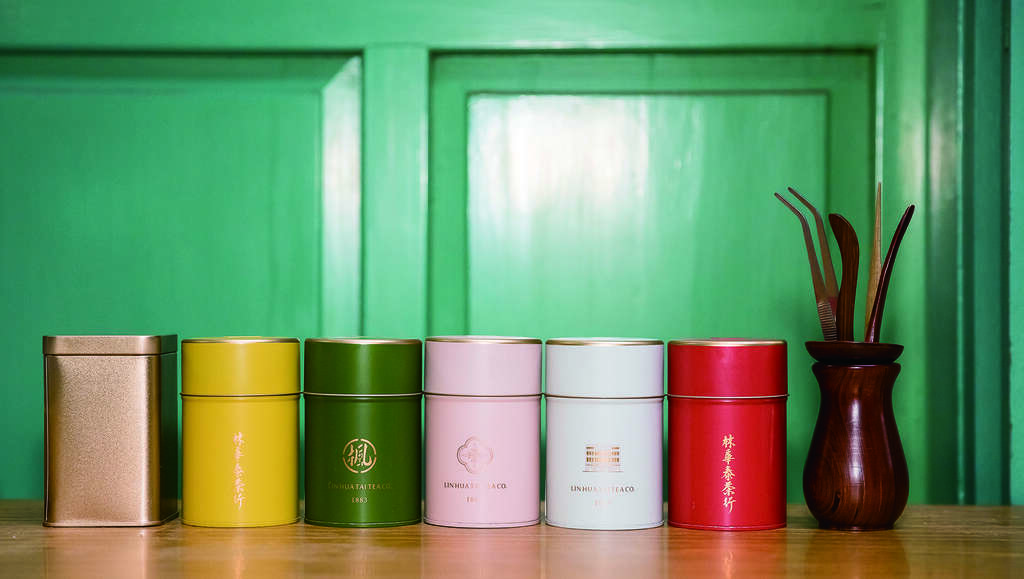 ►Taiwan has various teas for people to choose from. (Photo_ Liu Deyuan)
►Taiwan has various teas for people to choose from. (Photo_ Liu Deyuan)
Taiwan has distinctive seasons and produces different types of tea leaves all year round, each of which is unique. What Liao recommends to us is something he calls Spring tea. In his words, the tea is made from “the new tea leaves that awaken after a long hibernation, so they have had plenty of resting time. These leaves are the most tender and the freshest, and its sweet aftertaste and aroma are exceptional when compared to all other teas.”
When faced with a smorgasbord of spring teas with different origins on the shelves, how do we determine their quality? Manager Liao, equipped with 34 years of experience in tea making, gives us a tip: The color, the smell, and the taste are the three criteria for tea leaf quality. “The tea leaves should be complete, the color should be dark green but not dull without too many shredded or yellow leaves, and the aroma should be strong,” says Liao.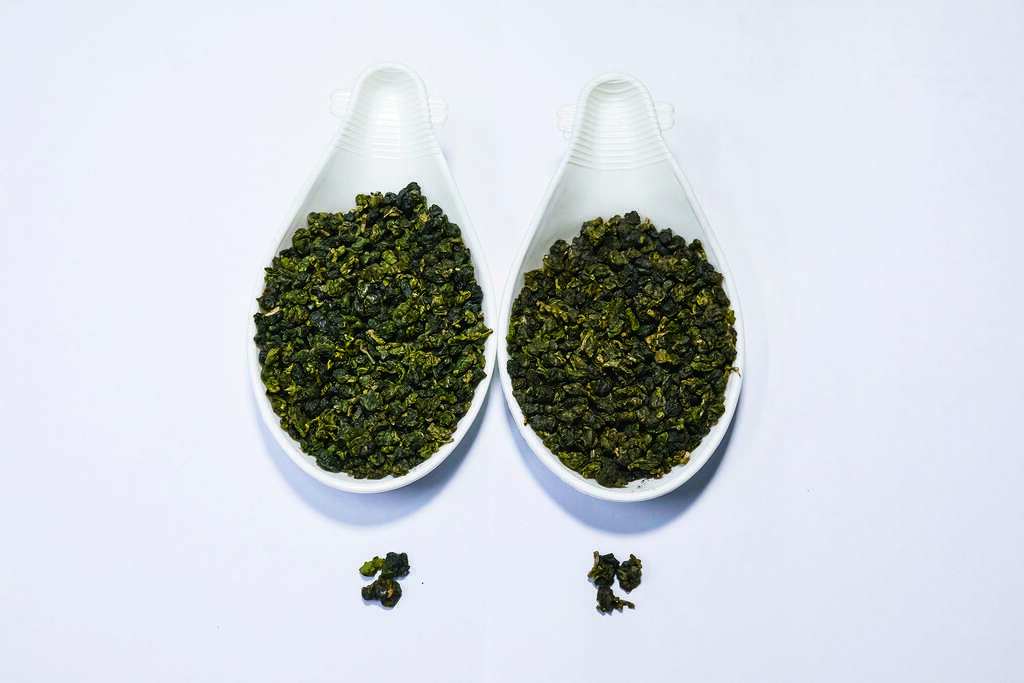 ►Judging the quality of tea leaves from their color and appearance. (Photo _ Liu Deyuan)
►Judging the quality of tea leaves from their color and appearance. (Photo _ Liu Deyuan)
Once the selection has been made, three elements are to be taken into consideration when brewing a pot of tea: The amount of tea leaves, the temperature, and the brewing time. When preparing Oolong tea, for example, the brewer should warm the teapot in advance before pouring in an appropriate amount of tea leaves. Then pour boiling water into the teapot (the water-tea leaf ratio should be 150 c.c. to 5 grams of tea leaves.) Wait for about three minutes and pour the hot tea into the serving cup. Though it seems like a simple action, there are few tricks to proper tea pouring. “Pour the tea to 70% full to avoid spilling and burning the guests’ hands.” The brewer, however, can choose to adjust the thickness of the tea according to its type and the guests’ preferences.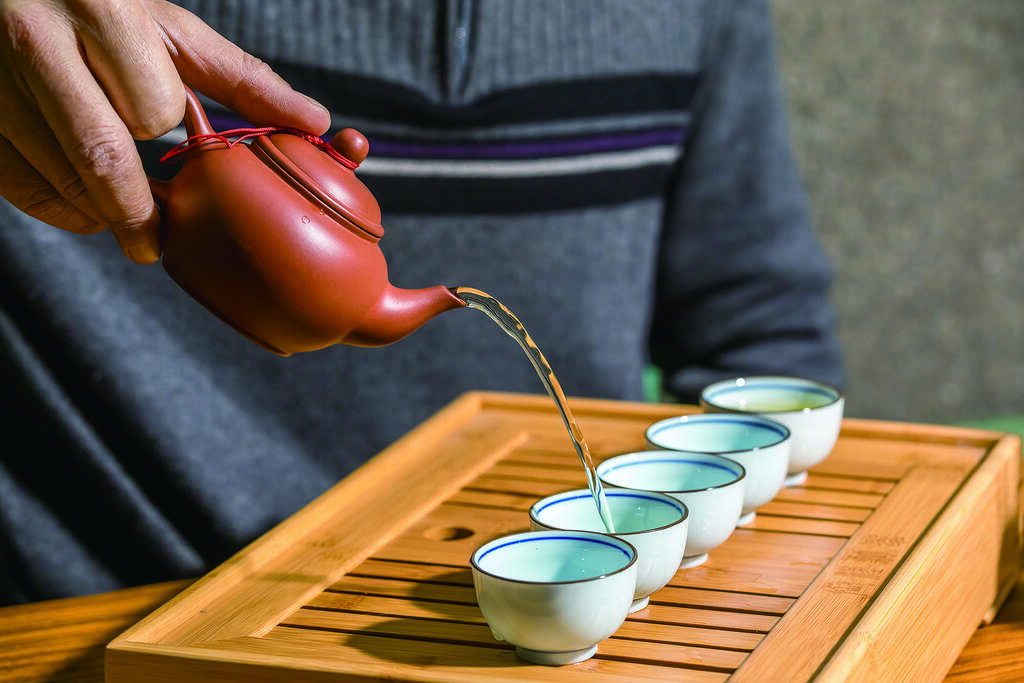
Sure, there are some intricate procedures for tea brewing, but you can always skip them. “Tea brewing should be casual without putting stress on the price of the tea. If you like it, it’s good tea,” Liao stresses.
A COLLISION BETWEEN ORIENTAL AND OCCIDENTAL: SPARKS OF CULTURAL EXCHANGE
“ Choose heavily fermented Oolong, black teas, or fruit teas with a slightly sour taste to go with cakes with heavy cream because these teas will help dig grease and refresh your taste buds. ”
Let’s change scenes from the traditional Lin Hua Tai Tea Company to the Zhongshan District, which is dotted with countless department stores and afternoon tea houses. Unlike other tea houses that give patrons a menu with tea names for them to choose from, smith&hsu presents a plate with more than 31 tea leaves for their customers to smell.
Among the jars on the plate, you can see local Taiwanese teas, Western black teas as well as tea blends, fruit teas, and herbal teas from all corners of the world. These small jars exude natural fragrances that make you feel like in exotic locales.
In smith&hsu, you can enjoy your Tieguanyin tea, grown by Taiwanese tea farmers, with a piece of cheesecake, or infuse your Taiwanese Green Tea with Bulgarian Rose Tea. You can practically see sparks of cultural collisions between the Oriental and Occidental teas bursting forth. But all of this talk of culture raises some questions. For one, what is the right way to enjoy the orthodox English afternoon tea? A traditional English three-tier cake stand should have a selection of salty and sweet pastries. It is also important to choose the right tea to go with the cakes. “Choose heavily fermented Oolong, black teas, or fruit teas with a slightly sour taste to go with cakes with heavy cream because these teas will help digest the grease and refresh your taste buds,” says Zhang Yuhuai (張玉慧), smith&hsu’s marketing director. “As for fruit pastries, go for slightly fermented green teas or partially fermented Oolong.”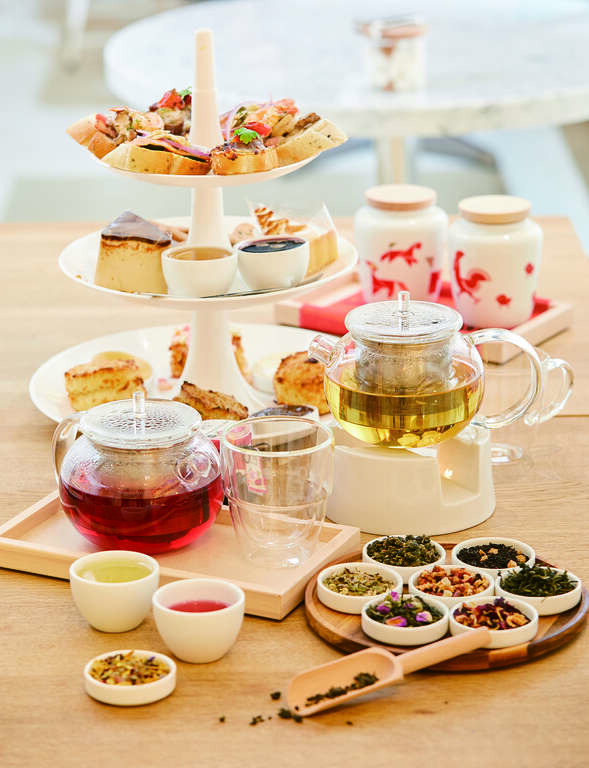 ►English afternoon tea is a treat for both the eyes and the stomach. (photo _ Liang Zhongxian)
►English afternoon tea is a treat for both the eyes and the stomach. (photo _ Liang Zhongxian)
Smith&hsu has tried to solve the long-asked question of “adding tea first or adding milk first.” The result showed differences in taste and flavor indeed, but they were subtle. Smith&hsu suggests that the decision be made according to the material of the tea utensils and the difference in temperature. That is, if you are using ceramic tea utensils, add hot tea first and then pour in milk; as for porcelain tea utensils, add whichever you like first.
Though there is a certain way of drinking English afternoon tea, Zhang expresses with delight that the essence of drinking afternoon tea is to communicate with other people. It might be complaints, talk of dreams, or a serious tête-à-tête; nonetheless, they are all beautiful moments of emotional exchange. Hot, warm, or cold, it doesn’t matter what the temperature is so long as you feel comfortable with it.
THE JAPANESE TEA CEREMONY: THE TAO OF ALTRUISM AND SELF-DISCIPLINE
People can adapt the Chinese tea tasting and Western afternoon tea to suit their preferences. The Japanese tea ceremony, on the other hand, is relatively strict and must be carried out precisely according to the set protocols. Zhu Xiaomei (祝曉梅), a tea ceremony professor at the Japanese Urasenke School, recalls the time when the Japanese tea ceremony first entered Taiwan. Many people were bemused by the fact that it took 20 minutes to taste a cup of Japanese tea.
“Every component of the Japanese tea ceremony is based on the concept of altruism,” expounds Zhu. This means you have to adjust the temperature and thickness of the pot of tea you are making right away to pander to your guest. Apart from altruism, the brewer is also seeking self-adjustment, hoping to reach the level of discerning the nature of everything. Follow the ideal of anatman, the belief that there is no “self” and you will have nothing to worry about.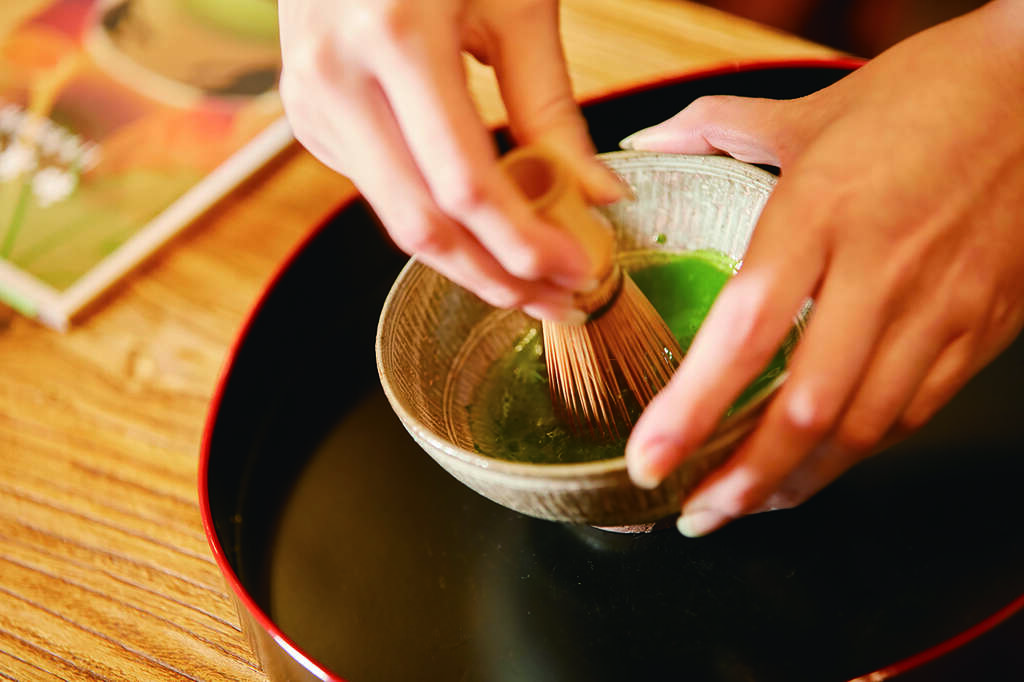 ►The Japanese tea ceremony sets rigorous tea brewing protocols. (photo _ Liang Zhongxian)
►The Japanese tea ceremony sets rigorous tea brewing protocols. (photo _ Liang Zhongxian)
Taiwan’s food and drink culture is heavily influenced by Japan, and a phenomenon you can easily witness is the prevalence of Japanese restaurants on the streets of Taipei. Matcha beverages are no doubt popular drinks among Taiwanese people. There are even courses teaching the authentic Japanese tea ceremony open to members of the public who are interested in the art. The Beitou Museum has been inviting members from the Japanese Urasenke School to teach people attracted to the Japanese tea ceremony since 2007. Students will be studying in a Japanese building with tutors dressed in kimonos, making you feel like you really are in Japan. Surprisingly, the course has become a magnet for foreign tourists. It is fair to say that Japanese tea culture is now one of Taipei’s tourist highlights.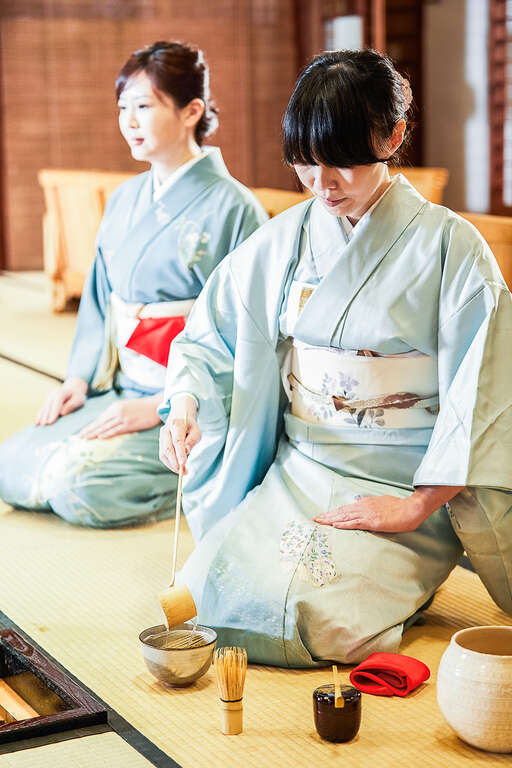 ►The Japanese tea ceremony puts equal stress on details and personal calmness. (photo _ Liang Zhongxian)
►The Japanese tea ceremony puts equal stress on details and personal calmness. (photo _ Liang Zhongxian)
Another selling point besides the beloved Japanese tea ceremony is wagashi, the Japanese confectionery, which is usually consumed along with tea. “Sakura trees are in full bloom during springtime, and the Japanese make wagashi in the shape of sakura,” says Zhu. Japanese Sencha made of the newly picked sakura is on top of her recommendation list. Instead of the bitter taste, Japanese Sencha has a relatively sweet flavor. The water used to brew Sencha should be around 70°C to 80°C as a higher temperature will make the tea too bitter to swallow.
Chinese, Western, and Japanese teas all have their own distinct merits to be enjoyed. When the inviting springtime weather arrives, do yourself a favor and make yourself a pot of tea and enjoy the taste of serenity and beauty.
Savor the Tea and Enjoy the Pleasant Aroma in the City on a Springtime Day
WORDS BY Lin Shohan
TRANSLATION BY Joe Henley
PHOTOS BY Liu Deyuan, Liang Zhongxian, Alisher Sharip
In Taipei, you are never far from a century-old tea shop. Blessed with frequent international exchanges over the centuries, the city is the confluence of tea houses from different cultures. No matter where you roam, there is no way you can miss the elegant smell of tea among Taipei’s streets and alleys.
SIP FROM THE TEA CUP WITH EASE IN TAIWAN’S CENTURY-OLD TEA SHOPS
“ Tea brewing should be casual without putting stress on the price of the tea. If you like it, it’s good tea. ”
The Chinese have a long history of tea drinking, which dates back to the era of Shennong (神農氏), the Emperor of the Five Grains in China 4,500 years ago. With such a long expanse of time, changes happen, making tea the most common drink amongst the ethnic Chinese all around the world.

Tiny as it is when compared to other places occupied by the Chinese, Taiwan still holds true to the essence of tea planting and tea making. The topography, climate, latitude, and altitude of the island are quite conducive to growing tea trees. Liao Mingzong (廖明宗), factory manager of the century- old Lin Hua Tai Tea Company (林華泰茶行), takes pride in Taiwan’s tea making technology. “The three factors that secure the quality of Taiwanese tea are : conscientious tea farmers, tea-making craft workers with sophisticated skills, and high-end equipment,” says Liao.
“Taiwan is bestowed with soft water in most regions,” says Laio with a smile on his face as he pours some boiling water with the right temperature in the teapot. “Taiwan has it all: the right climate, the right soil, and the right people. That’s why Taiwan is the land of tea drinking.”
 ►Taiwan has various teas for people to choose from. (Photo_ Liu Deyuan)
►Taiwan has various teas for people to choose from. (Photo_ Liu Deyuan)Taiwan has distinctive seasons and produces different types of tea leaves all year round, each of which is unique. What Liao recommends to us is something he calls Spring tea. In his words, the tea is made from “the new tea leaves that awaken after a long hibernation, so they have had plenty of resting time. These leaves are the most tender and the freshest, and its sweet aftertaste and aroma are exceptional when compared to all other teas.”
When faced with a smorgasbord of spring teas with different origins on the shelves, how do we determine their quality? Manager Liao, equipped with 34 years of experience in tea making, gives us a tip: The color, the smell, and the taste are the three criteria for tea leaf quality. “The tea leaves should be complete, the color should be dark green but not dull without too many shredded or yellow leaves, and the aroma should be strong,” says Liao.
 ►Judging the quality of tea leaves from their color and appearance. (Photo _ Liu Deyuan)
►Judging the quality of tea leaves from their color and appearance. (Photo _ Liu Deyuan)Once the selection has been made, three elements are to be taken into consideration when brewing a pot of tea: The amount of tea leaves, the temperature, and the brewing time. When preparing Oolong tea, for example, the brewer should warm the teapot in advance before pouring in an appropriate amount of tea leaves. Then pour boiling water into the teapot (the water-tea leaf ratio should be 150 c.c. to 5 grams of tea leaves.) Wait for about three minutes and pour the hot tea into the serving cup. Though it seems like a simple action, there are few tricks to proper tea pouring. “Pour the tea to 70% full to avoid spilling and burning the guests’ hands.” The brewer, however, can choose to adjust the thickness of the tea according to its type and the guests’ preferences.

Sure, there are some intricate procedures for tea brewing, but you can always skip them. “Tea brewing should be casual without putting stress on the price of the tea. If you like it, it’s good tea,” Liao stresses.
A COLLISION BETWEEN ORIENTAL AND OCCIDENTAL: SPARKS OF CULTURAL EXCHANGE
“ Choose heavily fermented Oolong, black teas, or fruit teas with a slightly sour taste to go with cakes with heavy cream because these teas will help dig grease and refresh your taste buds. ”
Let’s change scenes from the traditional Lin Hua Tai Tea Company to the Zhongshan District, which is dotted with countless department stores and afternoon tea houses. Unlike other tea houses that give patrons a menu with tea names for them to choose from, smith&hsu presents a plate with more than 31 tea leaves for their customers to smell.
Among the jars on the plate, you can see local Taiwanese teas, Western black teas as well as tea blends, fruit teas, and herbal teas from all corners of the world. These small jars exude natural fragrances that make you feel like in exotic locales.
In smith&hsu, you can enjoy your Tieguanyin tea, grown by Taiwanese tea farmers, with a piece of cheesecake, or infuse your Taiwanese Green Tea with Bulgarian Rose Tea. You can practically see sparks of cultural collisions between the Oriental and Occidental teas bursting forth. But all of this talk of culture raises some questions. For one, what is the right way to enjoy the orthodox English afternoon tea? A traditional English three-tier cake stand should have a selection of salty and sweet pastries. It is also important to choose the right tea to go with the cakes. “Choose heavily fermented Oolong, black teas, or fruit teas with a slightly sour taste to go with cakes with heavy cream because these teas will help digest the grease and refresh your taste buds,” says Zhang Yuhuai (張玉慧), smith&hsu’s marketing director. “As for fruit pastries, go for slightly fermented green teas or partially fermented Oolong.”
 ►English afternoon tea is a treat for both the eyes and the stomach. (photo _ Liang Zhongxian)
►English afternoon tea is a treat for both the eyes and the stomach. (photo _ Liang Zhongxian)Smith&hsu has tried to solve the long-asked question of “adding tea first or adding milk first.” The result showed differences in taste and flavor indeed, but they were subtle. Smith&hsu suggests that the decision be made according to the material of the tea utensils and the difference in temperature. That is, if you are using ceramic tea utensils, add hot tea first and then pour in milk; as for porcelain tea utensils, add whichever you like first.
Though there is a certain way of drinking English afternoon tea, Zhang expresses with delight that the essence of drinking afternoon tea is to communicate with other people. It might be complaints, talk of dreams, or a serious tête-à-tête; nonetheless, they are all beautiful moments of emotional exchange. Hot, warm, or cold, it doesn’t matter what the temperature is so long as you feel comfortable with it.
THE JAPANESE TEA CEREMONY: THE TAO OF ALTRUISM AND SELF-DISCIPLINE
People can adapt the Chinese tea tasting and Western afternoon tea to suit their preferences. The Japanese tea ceremony, on the other hand, is relatively strict and must be carried out precisely according to the set protocols. Zhu Xiaomei (祝曉梅), a tea ceremony professor at the Japanese Urasenke School, recalls the time when the Japanese tea ceremony first entered Taiwan. Many people were bemused by the fact that it took 20 minutes to taste a cup of Japanese tea.
“Every component of the Japanese tea ceremony is based on the concept of altruism,” expounds Zhu. This means you have to adjust the temperature and thickness of the pot of tea you are making right away to pander to your guest. Apart from altruism, the brewer is also seeking self-adjustment, hoping to reach the level of discerning the nature of everything. Follow the ideal of anatman, the belief that there is no “self” and you will have nothing to worry about.
 ►The Japanese tea ceremony sets rigorous tea brewing protocols. (photo _ Liang Zhongxian)
►The Japanese tea ceremony sets rigorous tea brewing protocols. (photo _ Liang Zhongxian)Taiwan’s food and drink culture is heavily influenced by Japan, and a phenomenon you can easily witness is the prevalence of Japanese restaurants on the streets of Taipei. Matcha beverages are no doubt popular drinks among Taiwanese people. There are even courses teaching the authentic Japanese tea ceremony open to members of the public who are interested in the art. The Beitou Museum has been inviting members from the Japanese Urasenke School to teach people attracted to the Japanese tea ceremony since 2007. Students will be studying in a Japanese building with tutors dressed in kimonos, making you feel like you really are in Japan. Surprisingly, the course has become a magnet for foreign tourists. It is fair to say that Japanese tea culture is now one of Taipei’s tourist highlights.
 ►The Japanese tea ceremony puts equal stress on details and personal calmness. (photo _ Liang Zhongxian)
►The Japanese tea ceremony puts equal stress on details and personal calmness. (photo _ Liang Zhongxian)Another selling point besides the beloved Japanese tea ceremony is wagashi, the Japanese confectionery, which is usually consumed along with tea. “Sakura trees are in full bloom during springtime, and the Japanese make wagashi in the shape of sakura,” says Zhu. Japanese Sencha made of the newly picked sakura is on top of her recommendation list. Instead of the bitter taste, Japanese Sencha has a relatively sweet flavor. The water used to brew Sencha should be around 70°C to 80°C as a higher temperature will make the tea too bitter to swallow.
Chinese, Western, and Japanese teas all have their own distinct merits to be enjoyed. When the inviting springtime weather arrives, do yourself a favor and make yourself a pot of tea and enjoy the taste of serenity and beauty.
Gallery
:::
Popular articles
 Spring Has Sprung: Beautify Your Home with Decorative Flowers and Plants (TAIPEI Quarterly 2019 Spring Vol.15)
Spring Has Sprung: Beautify Your Home with Decorative Flowers and Plants (TAIPEI Quarterly 2019 Spring Vol.15) Savor the Tea and Enjoy the Pleasant Aroma in the City on a Springtime Day (TAIPEI Quarterly 2019 Spring Vol.15)
Savor the Tea and Enjoy the Pleasant Aroma in the City on a Springtime Day (TAIPEI Quarterly 2019 Spring Vol.15) Shaping the Memories of a Century: Master Guo Gengfu’s Life of Mortar Shaping (TAIPEI Quarterly 2019 Spring Vol.15)
Shaping the Memories of a Century: Master Guo Gengfu’s Life of Mortar Shaping (TAIPEI Quarterly 2019 Spring Vol.15) If Only You Were in a Pair of Traditional Cloth Shoes: Dongtai Cloth Shoes Shop (TAIPEI Quarterly 2019 Spring Vol.15)
If Only You Were in a Pair of Traditional Cloth Shoes: Dongtai Cloth Shoes Shop (TAIPEI Quarterly 2019 Spring Vol.15) From Fingertips to Paper: Papercraft Artist Johan Cheng Cuts a Slice of Life's Most Beautiful Moments (TAIPEI Quarterly 2019 Spring Vol.15)
From Fingertips to Paper: Papercraft Artist Johan Cheng Cuts a Slice of Life's Most Beautiful Moments (TAIPEI Quarterly 2019 Spring Vol.15) Exotic Food in Taipei: Spring in the Plates (TAIPEI Quarterly 2019 Spring Vol.15)
Exotic Food in Taipei: Spring in the Plates (TAIPEI Quarterly 2019 Spring Vol.15)
 Savor the Tea and Enjoy the Pleasant Aroma in the City on a Springtime Day (TAIPEI Quarterly 2019 Spring Vol.15)
Savor the Tea and Enjoy the Pleasant Aroma in the City on a Springtime Day (TAIPEI Quarterly 2019 Spring Vol.15)